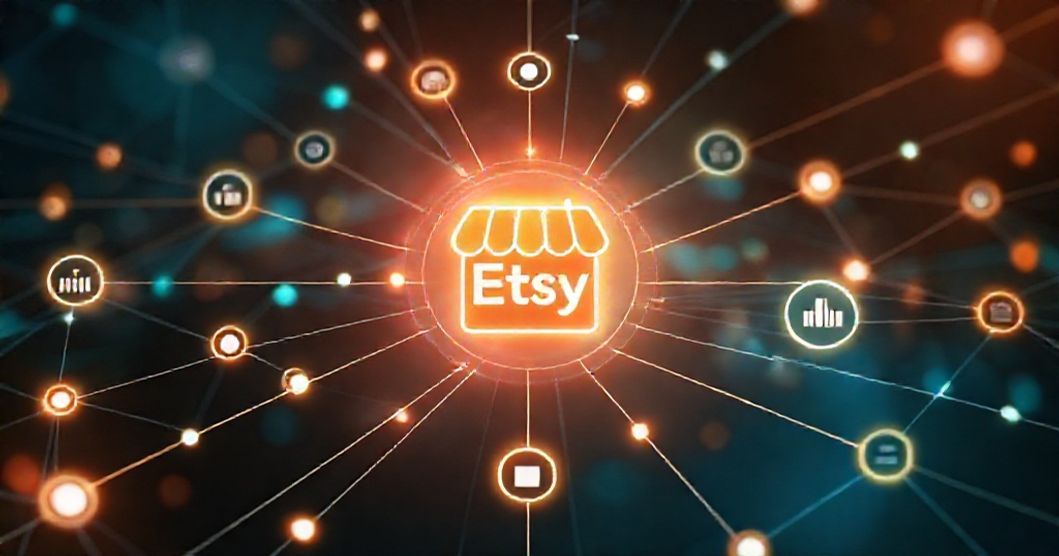For independent creators and small business owners, Etsy offers a unique marketplace to showcase handcrafted items, vintage goods, and creative supplies. As a shop grows, managing orders, inventory, shipping, and customer communication can become increasingly complex. This is where strategic Etsy integrations become invaluable, transforming manual, time-consuming tasks into streamlined, automated processes. Understanding how these integrations function can significantly enhance operational efficiency, reduce errors, and free up valuable time for product creation and business development.
Exploring various integration options allows sellers to connect their Etsy shop with other essential business tools, forming a cohesive digital ecosystem. These connections range from simple data synchronization to comprehensive workflow automation, each designed to address specific challenges faced by online entrepreneurs. By leveraging the right integrations, Etsy sellers can improve their overall business management, scale operations more effectively, and ultimately provide a better experience for their customers. This approach is key to sustaining growth in a competitive online environment.
Understanding Etsy Integrations for Seamless Selling
Etsy integrations refer to the process of connecting your Etsy shop with third-party software applications or platforms. These connections enable data exchange and functionality sharing between different systems, creating a more cohesive and automated workflow for your business. The primary goal of implementing integrations is to enhance efficiency by reducing manual data entry, preventing errors, and automating routine tasks. For any Etsy seller aiming for growth, leveraging these tools is not merely an option but a strategic imperative to maintain competitiveness and manage increasing demands effectively.
From inventory management to shipping and accounting, integrations can touch almost every aspect of an Etsy business. They help sellers manage operations more professionally, ensuring accuracy and consistency across all sales channels and administrative functions. The choice of specific integrations often depends on the individual needs and scale of a business, with solutions available for various stages of growth. Understanding the core functionalities of these tools is the first step toward building a robust and efficient Etsy selling ecosystem.
1. Streamlining Inventory Management Across Platforms
Effective inventory management is critical for any Etsy seller, especially those who sell across multiple platforms. Integrations with inventory management systems allow for real-time synchronization of stock levels. This prevents the frustrating and potentially damaging experience of overselling an item that has already been purchased on another channel. By centralizing inventory data, sellers gain a comprehensive overview of their product availability, enabling better stock planning and reducing the risk of stockouts.
These tools often provide features for tracking product variations, bundles, and raw materials, offering a detailed perspective on your entire inventory pipeline. For instance, if an item sells on Etsy, the integration automatically updates the stock level on your personal website or another marketplace. This automation saves considerable time and manual effort, ensuring accuracy and consistency across all sales points. Implementing such an integration is a foundational step towards scalable multi-channel selling and improved customer satisfaction.
2. Automating Shipping and Label Creation
Shipping is a significant component of any e-commerce business, and automating this process can lead to substantial time and cost savings. Etsy shipping integrations connect your shop directly with various shipping carriers and fulfillment services. These tools automatically import order details, generate shipping labels, calculate postage costs, and update tracking information directly within your Etsy orders. This eliminates the need for manual data entry into separate shipping platforms, drastically reducing the chances of errors and speeding up the fulfillment process.
Many shipping integrations also offer features like bulk label printing, rate comparison tools to find the most cost-effective shipping options, and automated customer notifications with tracking updates. This level of automation not only makes order fulfillment more efficient but also enhances the customer experience by providing timely and accurate shipping information. Choosing an integration that supports your preferred carriers and provides robust tracking capabilities is essential for smooth logistics management.
3. Simplifying Accounting and Financial Tracking
Managing the financial aspects of an Etsy business, including sales, expenses, and taxes, can be daunting. Accounting integrations bridge the gap between your Etsy sales data and professional accounting software. These tools automatically import your sales transactions, fees, and other financial data from Etsy into your chosen accounting system. This automation ensures that your financial records are always up-to-date and accurate, simplifying bookkeeping tasks significantly.
By connecting Etsy to an accounting platform, sellers can easily track revenue, categorize expenses, reconcile bank statements, and generate financial reports necessary for tax preparation. This eliminates the tedious process of manual data entry or spreadsheet management, allowing for better financial oversight and strategic decision-making. The ability to quickly access comprehensive financial data is crucial for understanding profitability, identifying areas for cost reduction, and ensuring compliance with tax regulations.
4. Boosting Customer Relationship Management (CRM) Efforts
Building strong customer relationships is vital for long-term success on Etsy. CRM integrations help sellers manage customer interactions, personalize marketing efforts, and enhance overall customer service. These tools can centralize customer data, including purchase history, communication logs, and preferences, allowing for a more informed and targeted approach to customer engagement. By understanding your customers better, you can tailor promotions, respond to inquiries more efficiently, and foster loyalty.
While Etsy provides basic messaging, a dedicated CRM can offer advanced features like automated follow-up emails, segmented customer lists for targeted campaigns, and integrated support tickets. This allows sellers to provide exceptional service, manage repeat buyers, and encourage positive reviews. Integrating your Etsy shop with a CRM system is a powerful way to transform casual buyers into loyal patrons, contributing significantly to your brand’s reputation and sustained growth.
5. Enhancing Marketing and Advertising Reach
To stand out in a crowded marketplace, effective marketing and advertising are paramount. Etsy marketing integrations connect your shop with various platforms designed to amplify your reach. This includes integrations with email marketing services, social media schedulers, and advertising campaign management tools. By automating the sharing of new listings, promotions, and shop updates, these integrations ensure your products are seen by a wider audience without constant manual effort.
For example, an integration could automatically add new Etsy customers to an email list, allowing you to send targeted newsletters or special offers. Similarly, connecting with social media tools can schedule posts about your latest creations, driving traffic back to your shop. These integrations help maintain a consistent online presence, foster community engagement, and ultimately drive more sales. Strategic use of these marketing tools can significantly boost your shop’s visibility and brand recognition.
6. Optimizing Product Listing and Store Management
Managing product listings, especially for shops with large inventories, can be time-consuming. Integrations designed for product listing and store management offer tools to streamline these processes. These applications often allow for bulk editing of listings, which is incredibly useful for updating prices, quantities, or product details across multiple items simultaneously. They can also assist with SEO optimization for your listings, helping your products rank higher in Etsy search results.
Furthermore, some integrations provide analytical insights into listing performance, helping sellers identify best-selling products and areas for improvement. Features like template creation for new listings, keyword research tools, and competitive analysis can empower sellers to create more effective and appealing product pages. Optimizing your listings and store management through these tools ensures your shop remains organized, attractive, and discoverable to potential customers.
7. Evaluating Integration Platforms and Costs
When considering Etsy integrations, sellers will encounter various types of platforms, each with its own structure and pricing model. Some integrations are direct API connections offered by third-party software, while others may be part of larger multi-channel selling platforms or Enterprise Resource Planning (ERP) systems. The cost of these integrations typically varies, ranging from free basic versions to subscription-based models with monthly or annual fees, which depend on the features offered, transaction volume, or number of users.
It is important to evaluate the long-term value against the cost. Many providers offer tiered pricing, allowing businesses to scale their integration solutions as they grow. While direct costs are a factor, sellers should also consider the potential savings in time and labor, which often outweigh the subscription fees. Thorough research into compatibility, support, and security features is crucial before committing to any integration platform to ensure it aligns with your specific business needs and budget.
Maximizing Etsy Potential with Strategic Integrations
Embracing Etsy integrations is a pivotal step for any seller looking to scale their business, enhance operational efficiency, and maintain a competitive edge. By automating key processes such from inventory synchronization to shipping and financial tracking, sellers can significantly reduce manual workload and minimize errors. This strategic approach frees up invaluable time, allowing creators to focus on product development, creativity, and deeper customer engagement. The right combination of tools forms a powerful ecosystem that supports sustainable growth.
Ultimately, investing in well-chosen integrations transforms an Etsy shop from a simple marketplace presence into a sophisticated, highly efficient e-commerce operation. Sellers gain better control over their business, improve customer satisfaction through faster fulfillment and communication, and unlock data-driven insights for smarter decision-making. By thoughtfully selecting and implementing integrations, Etsy entrepreneurs can confidently navigate the complexities of online selling, ensuring their passion for creation translates into a thriving and well-managed business.






